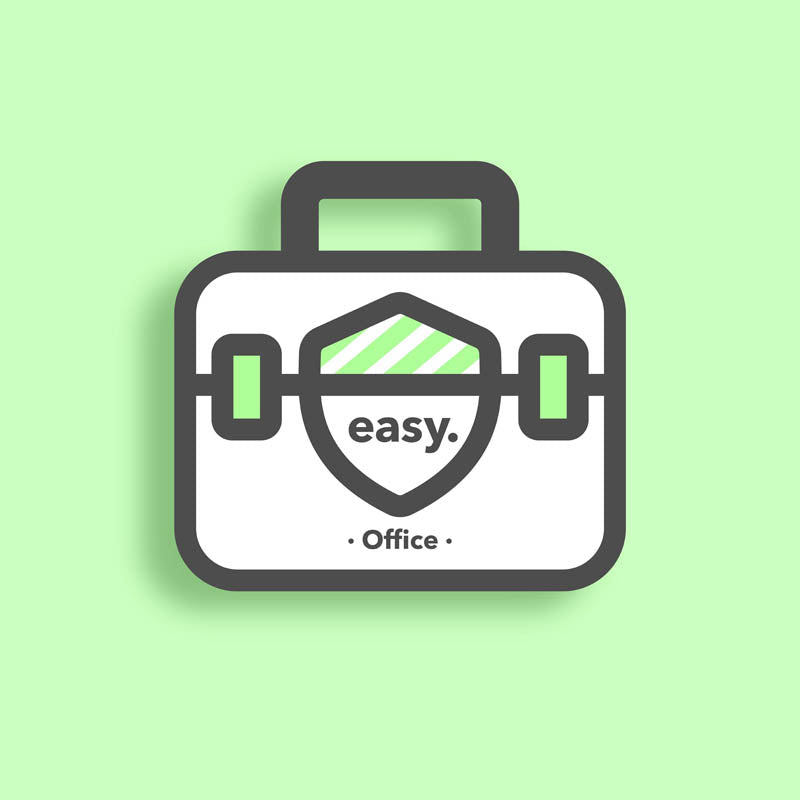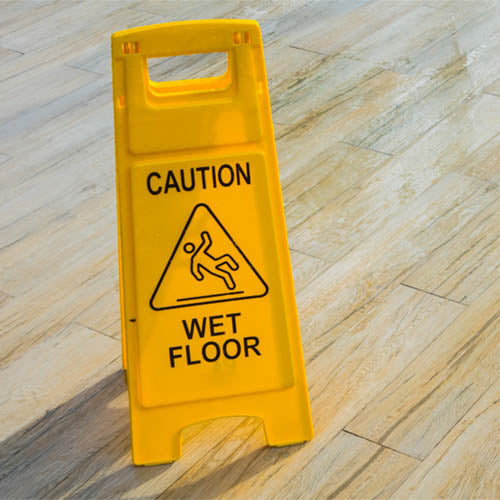
Office Health & Safety Documents

Master your office's health & safety with our essential tools.
Quickly elevate health & safety standards in your Office environment by managing health & safety yourself. Our Office health & safety documents, templates, and guidance are designed to be straightforward and user-friendly. Many are pre-populated with relevant information and pre-filled examples are included to make filling in your documents much easier.

The Crucial Role of Health & Safety in the Modern Office
In today's fast-paced office environment, it's easy to overlook the basics—like health & safety. However, this is more than a box-ticking exercise on a compliance sheet; it's the backbone of a thriving, productive workplace. Here we delve into why health & safety is so crucial in the modern office environment and how prioritising it can benefit both employees and employers alike.
The Foundation of Employee Wellbeing
Health & safety is not just about preventing accidents or complying with legal requirements; it's about creating an environment where employees can perform at their best. Poor lighting, inadequate ventilation, and uncomfortable workstations can lead to problems such as eye strain, fatigue, and musculoskeletal issues. By proactively addressing these issues, companies not only keep their staff healthier but also create a more efficient, productive work environment.
Building Trust and Commitment
When employees see that their health and well-being are a priority, it fosters a sense of trust and commitment. This positive culture leads to higher employee engagement and lower turnover rates, saving companies significant costs in the long run. Additionally, a healthy, satisfied team is likely to provide better customer service, strengthening the brand reputation.
Legal and Financial Implications
Ignoring health & safety can also have potentially severe legal and financial repercussions. Companies that fall foul of health & safety laws risk hefty fines, and in extreme cases, criminal charges. Moreover, workplace accidents and health issues can result in high insurance premiums and legal costs, not to mention the loss of skilled labour during recuperation.
The Technological Angle
Modern office working often involves the use of employee wellbeing technologies, from ergonomically designed furniture to software solutions that help with eye-strain and more. Embracing these advancements can go a long way in creating a safe and healthy work environment. For instance, standing desks and ergonomic chairs can help prevent back pain, while air purifiers can improve indoor air quality.
In Summary...
In a modern office work environment, health & safety plays a pivotal role in shaping a successful, happy, and productive workforce. By investing in positive health & safety measures, employers not only meet legal requirements but also demonstrate a commitment to their staff's well-being. As we've seen, this investment reaps significant benefits for both employees and the business as a whole. Therefore, it's high time we all take the crucial role of health and safety in the modern office seriously.
So, next time you walk into your office, take a moment to consider how your health & safety procedures are shaping your work environment—it's more important than you might think.
-

Ergonomic Hazards
Office workers often spend long hours at their desks, typing away at keyboards and staring at computer screens. Poorly designed workstations can lead to a variety of musculoskeletal problems, including back pain, neck strain, and carpal tunnel syndrome. Inadequate chairs, desk heights, or keyboard setups can exacerbate these issues. It's crucial to have ergonomically designed furniture and to make adjustments tailored to individual needs.
-

Slips, Trips, and Falls
These incidents are among the most common yet frequently overlooked office hazards. Loose carpeting, cluttered walkways, exposed electrical cords, and spills can all contribute to a risk of falling or tripping. Such events are not just painful but could result in long-term injury and are often costly for employers in terms of compensation and lost work time. Good housekeeping practices and immediate reporting of potential hazards can help prevent these accidents.
-

Stress and Mental Health
Stress and mental health are increasingly being recognised as significant health & safety concerns in the office environment. Heavy workloads, long hours, and high-pressure deadlines can lead to stress, anxiety, and even depression. Employers should actively engage in stress management strategies, such as mental health days, employee wellness programmes, and have an open dialogue about mental health.

Why pay expensive consultant fees when you can manage H&S yourself?
Improve your compliance while saving time and money by creating health & safety documents, customised to your business, yourself. Our office workplace health & safety range covers a suite of essential documents including health & safety policies, risk assessments, COSHH forms, fire safety documents, health & safety guidance, safety posters and more.
Benefits of managing H&S yourself...
-

Improve safety
Health & safety at work is about preventing accidents, incidents and ill-health by assessing the work environment, the activities within it, and taking appropriate action.
-

Increase compliance
Our ready to use documents, many of which are prefilled, will enable you to quickly increase your compliance to UK health & safety law.
-

Save money
With UK H&S consultants often charging upwards of £400 per day, there is a better way. Take control and save yourself time and money.

Office Health & Safety: Your Path to a More Productive Business
In the fast-paced world of office work, budgets are often tight and deadlines even tighter. It's easy to think that health & safety issues are less urgent than meeting deadlines or staying within budget. However, this is a misconception that could end up costing your business in the long run.
In an office setting, hazards may seem less obvious—things like ergonomically unfriendly furniture, clutter that poses tripping hazards, or poorly lit workspaces might appear trivial but can lead to significant health issues for your staff. Add to that the mental stress of demanding office work, and you've got a ticking time bomb of potential health & safety risks.
Failure to comply with regulations doesn't just endanger your team's well-being; it exposes your business to legal consequences, financial penalties, and damage to it's reputation. But there's a flip side: a well-designed, safe, and healthy work environment can increase productivity, reduce absenteeism, and improve overall staff morale. So, investing in health & safety isn't just a regulatory requirement; it's a strategic move that can yield real dividends for your business.
At easyhealthandsafety.com we aim to take the friction out of health & safety for office workplaces by providing products and guidance so simple to use they are almost enjoyable.
Frequently Asked Questions
Health & Safety in Office Environments: FAQs
What are the basic health and safety regulations that apply to UK offices?
The cornerstone of UK health and safety law is the Health and Safety at Work Act 1974. This is complemented by various other regulations such as the Workplace (Health, Safety and Welfare) Regulations 1992, which cover aspects like lighting, ventilation, and workspace design.
Quickly increase your business's health & safety compliance across the board with our Health & Safety Bundles. These provide a suite of essential documents that make the whole process easy.
Find our Office Health & Safety Bundle here.
How can ergonomic assessments benefit my office and staff?
Ergonomic assessments, such as DSE (Display Screen Equipment) Assessments, are critical for identifying workstation or environmental factors that may contribute to musculoskeletal issues like back pain or carpal tunnel syndrome. Such assessments can guide adjustments to furniture or equipment, leading to increased comfort, reduced absenteeism, and ultimately, higher productivity.
Find our simple-to-use DSE Self Assessment here.
What steps can be taken to prevent slips, trips, and falls in the office?
Ensuring walkways are free from clutter, mopping up spills immediately, and securing cables and rugs are all effective measures. Using appropriate signage to indicate wet floors or other hazards can also help prevent incidents. Regular inspections to identify and rectify potential trip hazards should be part of your safety procedure.
Does an office I need to have fire safety measures in place?
Absolutely. You should have a fire safety risk assessment and implement fire safety measures based on its findings. This usually includes fire alarms, extinguishers, and clear, marked escape routes. Staff should be trained in what to do in case of a fire.
Fire drills should be carried out at least once a year, but more frequently is advisable. All staff members must participate, and the drill should cover different scenarios and exit routes to ensure comprehensive preparedness. Record the results and use them for improvement in your fire safety protocol.
To assist with this please find our range of Fire safety documents here.
Do I need to complete a risk assessment in my office?
A risk assessment will protect your workers and your business, as well as help you to comply with the law. It looks at what might cause harm, what is needed to avoid it and assesses the effectiveness of any control measures in place.
You are probably already taking steps to protect your employees, but your risk assessment will help you decide whether you have covered all you need to. Record and review it on an ongoing basis and alwaysassess new risks.
Find our Office Risk Assessment here.
The full range of risk assessments is here.
What is the procedure for reporting and documenting workplace incidents for an Office?
An accident logbook should be maintained to record any incidents or near-misses. More serious incidents may require reporting to the Health and Safety Executive (HSE) under RIDDOR (Reporting of Injuries, Diseases and Dangerous Occurrences Regulations 2013). Documentation is crucial for both legal compliance and internal review.
Find our simple to use Accident Report Form here.
What are the best practices for electrical safety in an office setting?
Electrical equipment should be regularly inspected and tested by certified personnel. Avoid daisy-chaining extension cords to prevent overloading sockets, and always employ certified electricians for any maintenance, modifications or installations. Electrical safety is not just a compliance issue but a critical factor in preventing fires and electric shock injuries.







